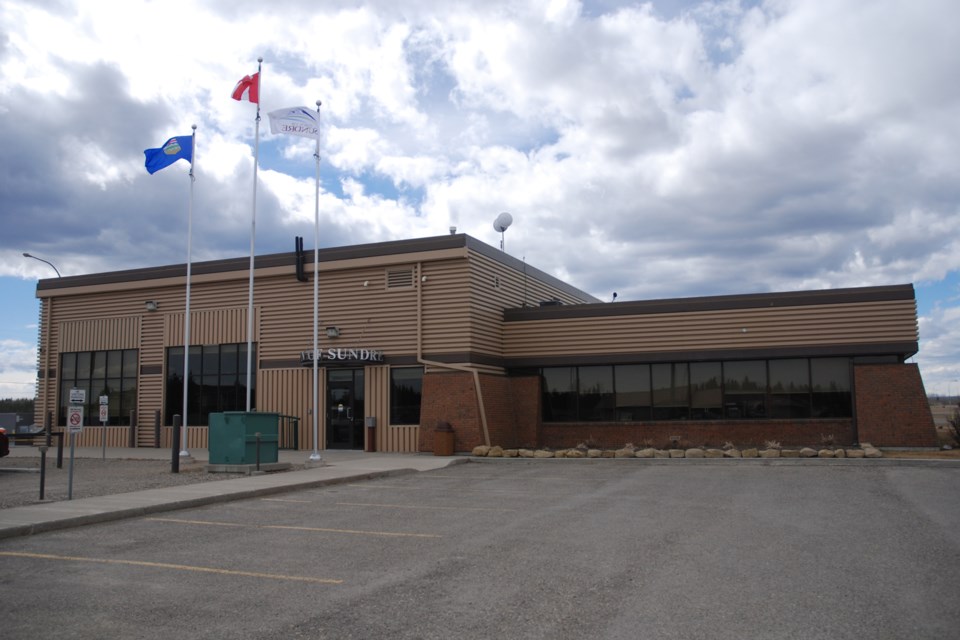SUNDRE – The municipality has updated a regularly revised “living document” that outlines design guidelines to provide the development industry with construction, inspections, and general requirements for new projects.
Linda Nelson, chief administrative officer, told council on Feb. 12 during a presentation that the matter had been under discussion for a number of years and that the municipality’s planning and operations department had endeavoured to develop a document reflective of town standards.
Offering some additional insight into the process, Sundre’s operations manager Jim Hall said among the objectives was to compile a comprehensive document that provides developers with a “clear, concise methodology to find out what and how to construct developments and projects for underground and surface works.”
“We do follow the City of Calgary design standards quite closely on a lot of the documents,” Hall said.
“Because most of the developers and construction crews in this zone and area of central Alberta, that’s what they refer to – they know those standards,” he explained.
Of importance to Sundre, and that which took some time to work through, was developing well-defined standards that are more specific to the geology of Sundre, which sits straddled over the Red Deer River on top of highly porous and rocky, gravel-laden ground.
So there was a focus on developing design standards with the objective of reducing future infiltration in areas with lots of ground water, he said.
Hall also brought up the municipally-owned and operated natural gas system that he asserts provides a good service for residents, but added that as Sundre grows, the demand will eventually outgrow his department’s two employees.
The section detailing design requirements for gas was developed in coordination with a professional engineer and tailored specifically for Sundre, he said, adding the document will with the passing of time continue to be updated to adapt with changing technological trends.
Hall later told council during a discussion period that moving forward, “concrete jungles are going to be a way of the past” because of how much hotter temperatures on cement surfaces tend to reach, and that Sundre should keep that in mind as well.
Nelson also noted that the municipality does not always exclusively dictate certain development design requirements, and said the provincial government might depending on a proposed project also require an historical impact assessment based on the nature of the land.
In other instances, the ministry of Transportation and Economic Corridors would also get involved, she said, adding there are going to be times when requests come from agencies other than the municipality itself.
Following the presentation, Coun. Jaime Marr commented that she was thankful to see 1.5-metre wide sidewalks as well as accessibility ramps factored into the development design guidelines.
Marr also sought clarification with regard to street lighting and whether the municipality is illuminating the sky at night.
“Are we polluting upwards? Or is it just down,” the councillor asked.
Hall said the municipality will continue to use the downward directional LED street lights that were introduced by FortisAlberta in 2017.
Older bulbs emitted more of an omnidirectional glow that blasted light upward as well as onto the street below, but the newer lights were developed to shine a cone of light on the street and sidewalk directly underneath.
“I think it reduces light pollution for sure,” said Hall.
Coun. Owen Petersen asked about the possibility of factoring in “curb cutting,” the idea being to cut out certain sections of curbs to enable more absorption of rainwater by yards and trees instead of allowing the runoff to flow down streets and ultimately into the river.
Hall said curb cutting had not been researched in depth and added, “Sundre is a mixture of pipe systems that go into the river, and also we have ponding.”
The approach of using temporary holding ponds works well in Sundre because if there is hydrological pressure, the pond will retain the water for a while before dissipating back into the ground, he said, adding larger cities tend to rely more on pipe systems to send excess water elsewhere.
Mayor Richard Warnock inquired about the kinds of pipes used to distribute natural gas to new developments.
“When these pipes go in the ground, what’s the lifespan?” asked Warnock.
Hall said that steel lines known as “yellow jackets” could still be used, and added there are three types of piping that historically have been installed in Sundre.
“We have polyethylene, which is the newest thing,” he said. “We started doing that I’m going to say in the late ’90s. Prior to that we had post-’78 pipe, which is yellow jacket, and we have pre-’78, which goes right back to our first pipes being put in the ground that are 1962.”
Hall continued to say that inspections have determined those pipes remain in great condition.
“Because of the soil conditions we have, our water doesn’t lay around the pipe and we have a good what we call corrosion system in place that keeps the pipes in good shape,” he said.
“Going forward though, every development and new mains that we put in are polyethylene, and the lifespan on them is anywhere from 50 to 100 years, but mostly on the 100 year side.”
Seeking confirmation for clarity, the mayor then asked if all of the new subdivision developments would be built to that standard.
“With lower-pressure distribution for distribution of gas – like for us, it’s 35 PSI going to the subdivisions – it’s all PE,” said Hall, using the acronym for polyethylene.
A motion to accept the presentation as information was carried.



